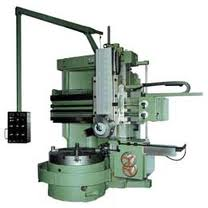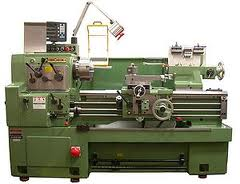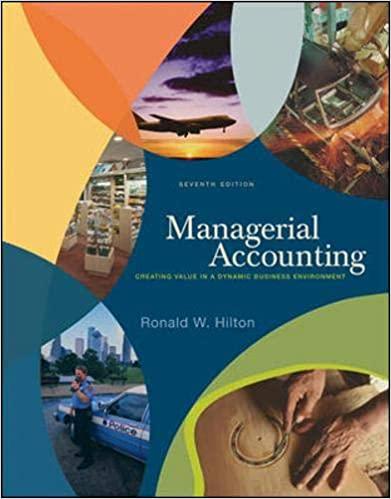Question
Tabitha's Toys specializes in the manufacture of toys for children of all ages. In the Tabitha plant, parts for Tabitha's smaller toys are machined on
Tabitha's Toys specializes in the manufacture of toys for children of all ages. In the Tabitha plant, parts for Tabitha's smaller toys are machined on two converted metal lathes. These lathes were purchased in used condition six years previously, and the remaining net book value of each is $5,000 (35% of the initial cost). The lathes are being depreciated on the straight-line method to a $0 salvage value. Larger toys have been made using a small boring mill, which is fully depreciated to a $0 salvage value. All three pieces of equipment (the two converted lathes and the boring mill) are badly worn, and considerable difficulty had been encountered in making toys to meet production specifications. In the opinion of the industrial engineering supervisor, it is necessary either to overhaul or replace the machines (continued operation without an overhaul or replacement is not an option).
Option #1: Replacement
One option is to replace the present lathes and boring mill with two new automatic lathes. These two new lathes have precision programming that enable the manufacture of both large and small toys, eliminating the need for a boring mill. The estimated cost of these lathes is $22,000 each. There will also be a charge of $1,075 per lathe for installation and delivery costs. Tabitha will pay a 6.5% sales tax on the purchase of the lathes and $500 per lathe in maintenance set-up fees to properly calibrate the lathes to Tabitha's unique product specifications before production can begin.
Brielle Baumgartner, the engineering supervisor, estimates that each of the new lathes will have a physical life of 10 years. Ms. Baumgartner also believes they will have a 20% greater capacity than the old machines (i.e., they will permit a 20% increase in physical output with the same labor hours). Each of the new lathes will be depreciated on a straight-line basis over 10 years to a $1,100 salvage value. Ms. Baumgartner estimates that installing the two new lathes in place of the old machines will free approximately 250 square feet of floor space within the main production facility. Although Tabitha Toys has no immediate alternative use for the space, rent, heat, and light are allocated on a space basis and charged at an annual rate of $3 per square foot.
Because of the speed of the new lathes, additional raw materials inventory must be maintained. With the new lathes, it is estimated that investment in this inventory (also known as net working capital) will be $1,650, and that this investment will be fully recovered at the end of the 10th year.
Direct labor costs with the present lathes and boring mill are approximately $20,000 per year. However, with the two new lathes it is estimated that even with the same volume of production, these costs will be cut to about $14,100 per year. There will also be a reduction in the allocation of general overhead costs* to this department. Such costs are currently allocated on the basis of 15% of direct labor.
Option #2: Overhaul
The second option to overhaul the two old lathes involves the installation of new bedways, headstocks, carriages, and tool feeds at an estimated cost of $6,700 in direct labor and parts for each lathe. Additional repairs required to put the boring mill in satisfactory condition are estimated to be $540 in direct labor and parts. Ms. Baumgartner believes these repairs will prolong the life of the lathes and boring mill approximately 10 years, although for income tax purposes the "cost" of the rebuilt machines (present book value plus the cost of overhaul) will be amortized on a straight-line basis to a $0 salvage value over seven years.
The "normal" annual maintenance costs for the two present lathes are approximately $1,400 higher than estimated annual maintenance costs for the two new lathes. Ms. Baumgartner believes that "normal" maintenance costs will remain roughly unchanged if the present lathes are repaired. Current maintenance for the boring mill is $500 annually and will remain the same after the overhaul.
Looking ahead, company officials are confident that sales will equal, if not exceed, their current volume for the foreseeable future. Sufficient funds are available to either 1) purchase the new equipment or 2) make the repairs; whichever option is better for Tabitha's Toys. The company's corporate income tax rate is 35%, and it estimates its after-tax cost of capital at 12.0%. Using your knowledge of capital budgeting analysis, which of these two options should be selected by Tabitha's Toys? Why?
Exhibit 1: Lathe Exhibit 2: Boring Mill


Step by Step Solution
There are 3 Steps involved in it
Step: 1
To determine which option Tabithas Toys should select we need to perform a capital budgeting analysi...
Get Instant Access to Expert-Tailored Solutions
See step-by-step solutions with expert insights and AI powered tools for academic success
Step: 2

Step: 3

Ace Your Homework with AI
Get the answers you need in no time with our AI-driven, step-by-step assistance
Get Started


